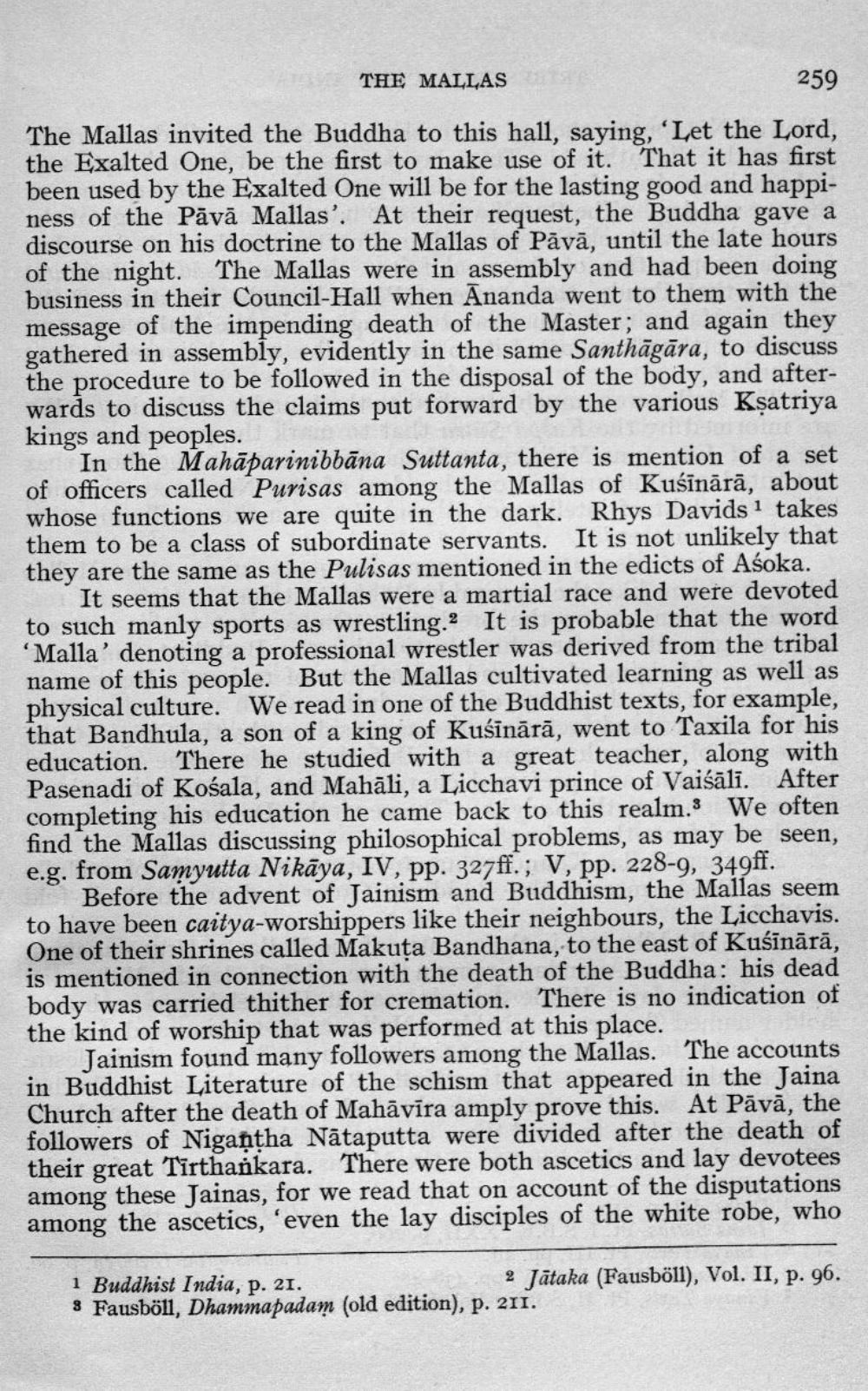________________
THE MALLAS
259
The Mallas invited the Buddha to this hall, saying, 'Let the Lord, the Exalted One, be the first to make use of it. That it has first been used by the Exalted One will be for the lasting good and happiness of the Pāvā Mallas'. At their request, the Buddha gave a discourse on his doctrine to the Mallas of Pava, until the late hours of the night. The Mallas were in assembly and had been doing business in their Council-Hall when Ananda went to them with the message of the impending death of the Master; and again they gathered in assembly, evidently in the same Santhagara, to discuss the procedure to be followed in the disposal of the body, and afterwards to discuss the claims put forward by the various Kṣatriya kings and peoples.
In the Mahaparinibbana Suttanta, there is mention of a set of officers called Purisas among the Mallas of Kuśinārā, about whose functions we are quite in the dark. Rhys Davids1 takes them to be a class of subordinate servants. It is not unlikely that they are the same as the Pulisas mentioned in the edicts of Aśoka.
It seems that the Mallas were a martial race and were devoted to such manly sports as wrestling. It is probable that the word 'Malla' denoting a professional wrestler was derived from the tribal name of this people. But the Mallas cultivated learning as well as physical culture. We read in one of the Buddhist texts, for example, that Bandhula, a son of a king of Kuśīnārā, went to Taxila for his education. There he studied with a great teacher, along with Pasenadi of Kośala, and Mahāli, a Licchavi prince of Vaiśāli. After completing his education he came back to this realm. We often find the Mallas discussing philosophical problems, as may be seen, e.g. from Samyutta Nikaya, IV, pp. 327ff.; V, pp. 228-9, 349ff.
Before the advent of Jainism and Buddhism, the Mallas seem to have been caitya-worshippers like their neighbours, the Licchavis. One of their shrines called Makuta Bandhana, to the east of Kuśīnārā, is mentioned in connection with the death of the Buddha: his dead body was carried thither for cremation. There is no indication of the kind of worship that was performed at this place.
Jainism found many followers among the Mallas. The accounts in Buddhist Literature of the schism that appeared in the Jaina Church after the death of Mahavira amply prove this. At Pāvā, the followers of Nigantha Nätaputta were divided after the death of their great Tirthankara. There were both ascetics and lay devotees among these Jainas, for we read that on account of the disputations among the ascetics, 'even the lay disciples of the white robe, who
2 Jātaka (Fausböll), Vol. II, p. 96.
1 Buddhist India, p. 21.
8 Fausböll, Dhammapadam (old edition), p. 211.




